Jaipur Monuments
Monuments in Jaipur, also known as 'Pink City', is the capital of Rajasthan. It was founded by Maharaja Jai Singh II in 1727 AD. Jaipur is famous for its rich cultural heritage and has today become the most popular tourist destination in India. Here, one gets to see the architectural marvel of ancient forts and monuments that stand tall even to this day. The city has acquired the name, Pink City, because of the extensive use of pink color on the walls during the visit of Prince Wales. Jaipur today attracts a huge number of tourists from all over the world.
The city is garlanded by the presence of number of beautiful monuments that echo the splendid history of the city. Magnificent monuments such as Gaitore, Hawa Mahal, Jantar Mantar, Jal Mahal, Rambagh Palace and Statue Circle etc. are spectacular sights which attract hordes of tourists every year. Nahargarh Fort, Jaigarh Fort and Amer Fort are the three of the oldest forts that provide great visual treat to the visitors. Gaitore is a shrine dedicated to the Maharajas of Jaipur and is known for its exquisite carvings. Situated in the heart of Jaipur is the City Palace. The Statue Circle is a tribute to the founder of Pink city, Maharaja Jai Singh II. With so much heritage on display in the form of monuments, it is no surprise then that tourists coming to this city always feel the urge to come back.
Amber Fort: Amber fort is also known as the Amer Fort between the locals and its the most importation monument of Jaipur's monuments. It standout amongst the most breathtaking monuments in India, decently saved and properly restored monument. Whenever you talk about the Jaipur sightseeing it’s the first monument that comes to your mind. Amber fort is approximate is the best among these five.
The primary goal of such type of observatory is to know the correct position and forecast the accurate movement of Sun, Moon and other planets.
Nahargarh Fort: Picturesque perched on the top of hill, the Nahargarh Fort offers breathtaking view of the city below. Initially built by Sawai Jain Singh in 1734. It was enlarged and given its present shape by Sawai Madho Singh in1885. Decorative motifs in some of the rooms are charming.
From the windows of the nine identical suites, one gets a magnificent view of the city, with its geometric design. From Amer there is a road to Nahargarh, which passes through the hills.
Jaigarh Fort: The western horizon is dominated by the extensive walls, watch towers and gateways of Jaigarh Fort. It is one of the few military structures of medieval India preserved almost intact, containing palaces, open and covered reservoirs gardens, a granary, an armory, a well planned cannon foundry, several temples, a tall tower and a giant cannon Jain mounted prohibition, the world's largest cannon. Jaigarh Fort was a center of artillery production for the Rajputs, and the place where the largest cannon on wheels in the world was. Smelters cause fascination among visitors.
A 5-kilometer canal enters the complex to collect water from the mountains and save the fort for the soldiers. There is a huge reservoir that connects to that channel. It is assumed that the king of Amber / Jaipur used compartments beneath that tank to store the gold and jewelery of the royal family.
The arid landscape of the Aravalli Hills gradually disappearing in the mist of the desert, let anyone absorbed. The views of the Amber Fort and its gardens also make your visit as recommended.
Jal mahal: This fascinating palace is located in the center of beautiful Man Sagar Lake. It’s a testament to the luxury lifestyle of the Maharajas of this city.
It was built as a summer palace and a place of pleasure by Sawai Pratap Singh in 1799. The building reflects an excellent technique and knowledge of striking architecture that time.
Man Sagar Lake is a man-made lake. A dam between the two hills. The dam made by Sawai Man Singh II because the water demand of the population of the city of Jaipur was increasing. Visit the lake can be a very rewarding experience because of the various species of birds that can be observed especially in the cold season.
Albert Hall Museum: The Albert Hall Museum of Jaipur also known as Central Museum, is one of the best places to learn about the culture, traditions and customs of the area.
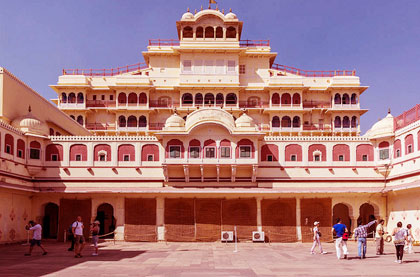
A combination of conventional Rajasthani and Mughal architecture, City Palace complex has more than.

Across the road from the palaces is the famous Jantar Mantar one of the five observatories in India.
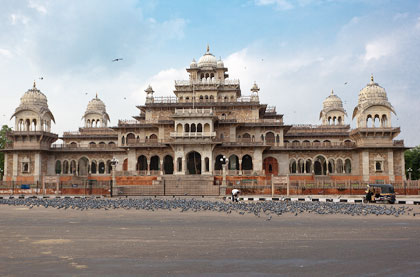
Located just outside the walled city is the sprawling Ram Niwas garden, which has always been a place.

This is a traffic round about In Jaipur. The Statue Circle is not only the most famed circle but the most.
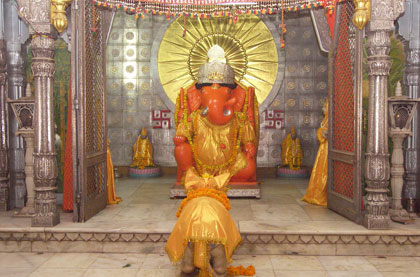
In the middle of Jaipur rises a small hill Moti Dungri meaning pearl hill, because it looks hill a drop.
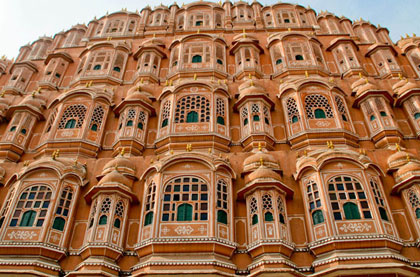
Poet king Sawai Pratap Singh built this palace of winds. This is the most easily recalled landmarks of Jaipur.

Amber (pronounced Amer) is situated about 11 kilometres from Jaipur and was the ancient citadel.

The Jaigarh fort is the most spectacular of the three-hilltop forts that overlook Jaipur. In Mughal times.
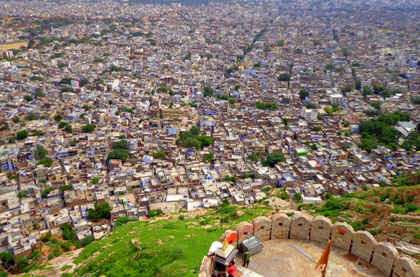
Nahargarh Fort is located on the sheer rugged ridge of Aravali Hills and it forms an impressive northern.




